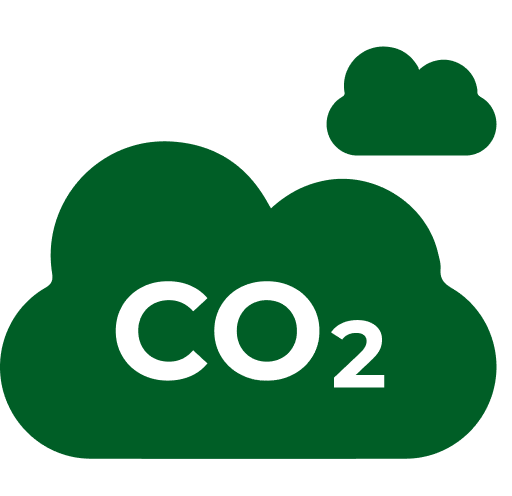Em 2015, todos os países membros das Nações Unidas adotaram a Agenda para o Desenvolvimento Sustentável (2030) com a definição de 17 objetivos que vêm contribuir para a paz e prosperidade, para as pessoas e para o planeta.
O objetivo número 7 – Energias Limpas e Acessíveis – vem garantir o foco no acesso a fontes de energia fiáveis, sustentáveis e modernas para todas as pessoas.
A Helexia, através dos investimentos em projetos de transição energética tem contribuído para que mais empresas se descarbonizem e se tornem mais competitivas, através da redução das suas faturas energéticas, conduzindo a economia para um desenvolvimento mais sustentável.
Os projetos Helexia que fazem uso de tecnologias de energias renováveis e eficiência energética têm múltiplos impactos positivos para o ambiente e para as pessoas, pela redução das emissões de gases com efeito de estufa (GEE), e por consequência, na melhoria da saúde pública pela melhoria da qualidade do ar.
Estes projetos, são tipicamente instalados em zonas industriais ou urbanas, sem impactos para a paisagem natural ou para a biodiversidade, minimizando os impactos destas tecnologias na vida das pessoas e nas suas relações com os lugares.
Os indicadores usados pela Helexia na comunicação de projetos de transição energética servem o propósito de informar os nossos stakeholders sobre os contributos técnicos, económicos e ambientais de cada projeto, sejam de produção de energia fotovoltaica ou de economia de energia.
Por termos em conta a diversidade dos nossos stakeholders, trabalhamos, para além dos indicadores técnicos, indicadores ambientais, com caracter mais informal, e que podem ser interpretados mais facilmente por um público sem conhecimento educacional ou profissional nas áreas de ambiente, energia, floresta e outras.
De forma a tornar clara e transparente a informação relativamente aos indicadores Helexia para os projetos de transição energética em que investimos, divulgamos a metodologia e cálculos usados.

Potência Total da Central Fotovoltaica Instalada (kWp)
A potência da central fotovoltaica instalada é apresentada na medida de quilowatt-pico (kWp). Este indicador está relacionado com a potência total do conjunto de painéis fotovoltaicos instalados que compõem a central. Se uma central fotovoltaica tiver um conjunto de 3000 painéis instalados com uma potência de 330 watts cada, a potência total da central será de 990kWp.
Ex.: Potência Total = Nº de painéis instalados X Potência (W) de cada painel

Produção Anual Estimada da Central Fotovoltaica (MWh)
A produção anual de energia por uma central fotovoltaica é apresentada na medida de megawatt-hora (MWh).
Este indicador está relacionado com a potência total da central (kWp) e com a Yield – uma medida de performance assente em diferentes fatores, tais como:
Média da irradiação solar anual dos últimos 10 anos
Zona geográfica da central solar
Inclinação e orientação dos painéis solares
Características dos painéis solares e dos restantes equipamentos da central fotovoltaica
Ex.: Produção anual de Energia = Yield X Potência da central (kWp)

CO2 evitado
O dióxido de carbono (CO2) evitado nos projetos solares da Helexia é calculado através da produção de energia limpa por uma central solar fotovoltaica. Desta forma, quando uma central produz energia solar e essa energia elétrica é consumida num edifício, significa que esse edifício não irá utilizar outras fontes de energia, como as provenientes de combustíveis fósseis, que emitem gases com efeito de estufa (GEE) prejudiciais para a atmosfera, incluindo o CO2. Tal como descrito no despacho 17313/2008, considera-se que por cada kWh de eletricidade consumido, são emitidos 0,47 Kg de CO2.
Ex.: CO2 evitado = Produção de Energia (kWh) X 0,47

Unidades de Árvores Plantadas (Equivalente)
A plantação de árvores nas nossas florestas tem um impacto muito positivo no ambiente, pelo contributo à biodiversidade, produção de oxigénio e captura de carbono. As árvores absorvem naturalmente ao longo da sua vida, quantidades consideráveis de dióxido carbono. De acordo com um estudo do U.S. Department of Energy (1998) citado pela United States Environmental Protection Agency, uma árvore conífera média, com 10 anos, numa zona urbana sujeita a condições específicas de sementeira, plantação e transplantação, absorve cerca de 39Kg de carbono. No nosso cálculo, dividimos as toneladas de CO2 evitadas num projeto fotovoltaico, pela quantidade média de carbono capturado por uma árvore (39Kg), para acharmos o número equivalente de árvores plantadas.
Ex.: Unidade de árvores plantadas = CO2 evitado / 39

Consumo anual de energia por X famílias (equivalente)
Calculamos o consumo energético por habitação/família com base no consumo médio anual de eletricidade por habitação em França no ano de 2018 (≈ 5350 kWh/ano). Por defeito, e dada a oscilação do consumo energético anualmente, estipulamos como consumo médio por habitação 5000 kWh/ano. O consumo de energia elétrica no setor doméstico em França é superior ao consumo em Portugal (≈ 3300 kWh/ano) e ao consumo médio da união europeia (≈3700 kWh/ano).
Através da monitorização da produção anual de energia que fazemos às centrais fotovoltaicas da Helexia, conseguimos identificar o número equivalente de famílias que poderiam beneficiar da energia limpa e renovável produzida pelas nossas centrais, nas suas habitações. Em projetos como o Grupo Montalva/Izidoro, a energia limpa produzida anualmente pelas centrais fotovoltaicas instaladas tem o potencial para abastecer com energia elétrica freguesias inteiras, com cerca de 3000 habitantes, como é o caso de Castro Marim, Sobral de Monte Agraço ou Benfica do Ribatejo, por exemplo (AEDRL, 2013).
Ex.: Consumo anual de energia por X famílias = Produção anual de energia (kWh) / 5000
Glossário
CO2 – dióxido de carbono
GEE – gases com efeito de estufa
MWh | kWh – megawatt-hora | quilowatt-hora – unidade de energia
MWp | kWp – megawatt-pico | quilowatt-pico – máximo de potência fotovoltaica instalada
W – watt – unidade de potência
Yield – medida de performance
